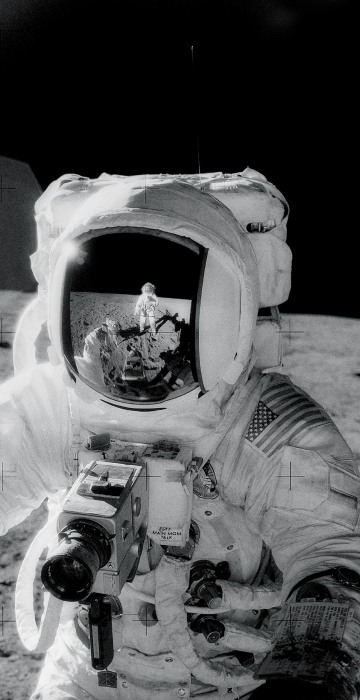
Space
The 12 men who walked on the moon
From 1969 to 1972, twelve men stepped foot on Earth's natural satellite.
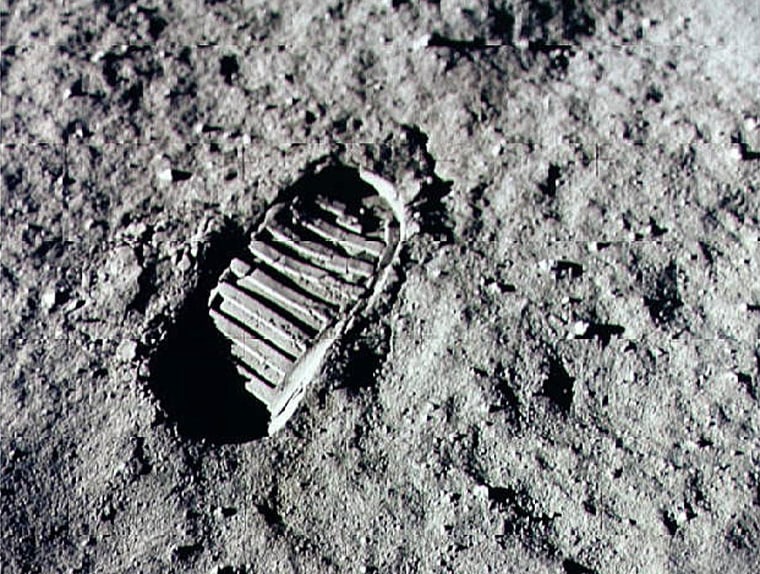
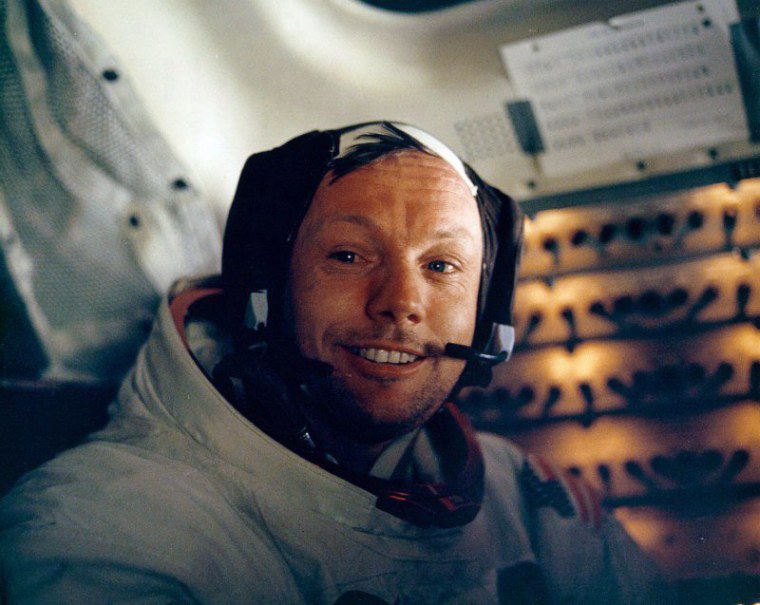
"That's one small step for man, one giant leap for mankind," Armstrong is famously quoted as saying after walking on the moon, but in interviews he claimed that he meant to say "one small step for a man."
Armstrong died in 2012 at age 82 following complications resulting from cardiovascular procedures.
At left: Armstrong sits inside the lunar module after his historic walk on the surface of the moon.
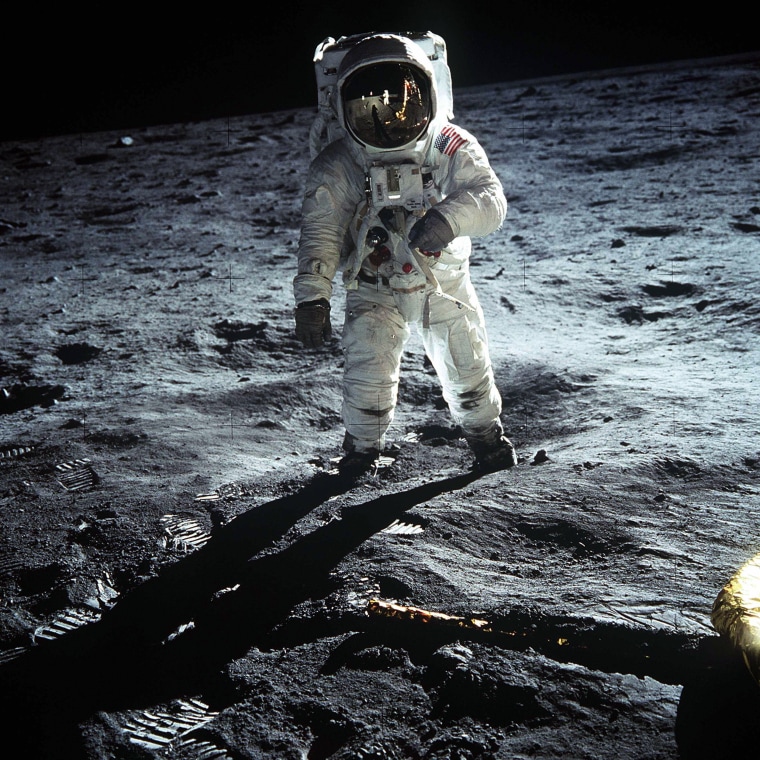
Buzz Aldrin
Apollo 11 astronaut Buzz Aldrin, the second man to walk on the moon, stands next to the lunar module "Eagle" on July 20, 1969.
Neil Armstrong can be seen taking the picture in the reflection on the helmet.
Apollo 11 from launch to lunar landing: Photos from the first journey to the moon
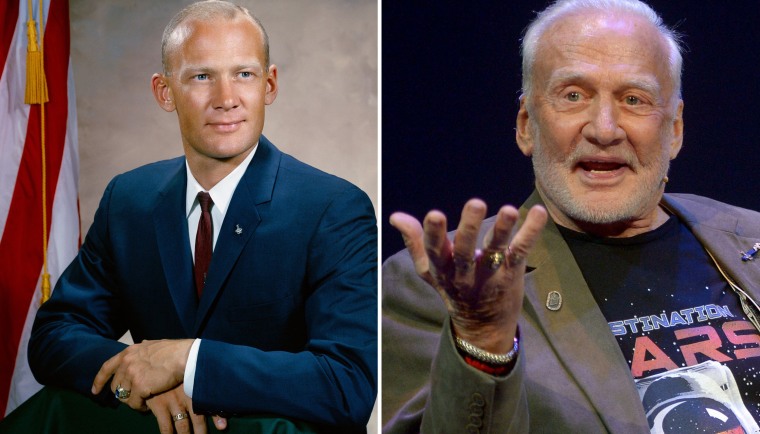

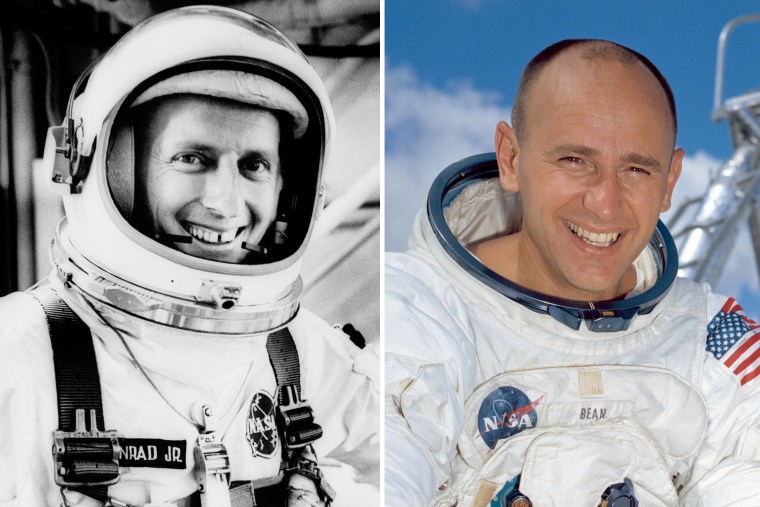
Charles "Pete" Conrad, the third man to walk on the moon, poses at left in 1965 before his first space flight aboard Gemini 5.
Conrad died after a motorcycle accident in Ojai, California, in 1999. He was 69.
Apollo 12 lunar module pilot Alan Bean poses in 1969 at right.
Bean resigned from NASA in June 1981 to devote his time to painting. He died on May 26, 2018, at the age of 86, after suddenly falling ill while travelling.

Alan Bean sits by two of his paintings at an exhibition of his artwork at the National Air and Space Museum to celebrate the 40th anniversary of the first Apollo moon landing in 2009.
Related: Alan Bean, the fourth astronaut to walk on the moon, dead at 86
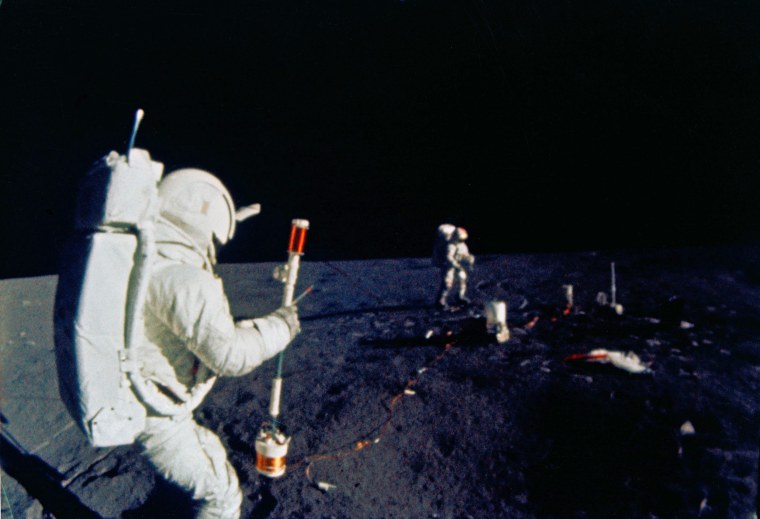
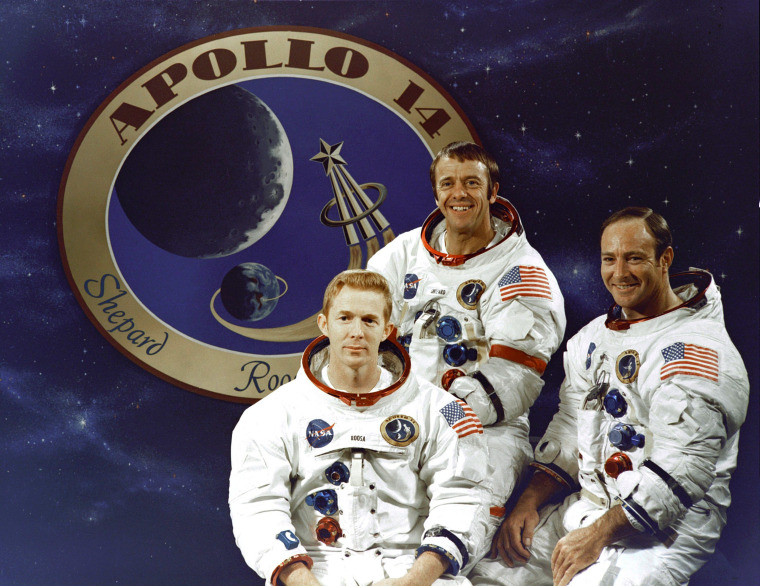
The crew of the Apollo 14 lunar landing mission, from left, Stuart Roosa, commander Alan Shepard and lunar module pilot Edgar Mitchell. Roosa remained in orbit while the other two landed on the moon.
Mitchell died at 85, in Florida, in early 2016. After NASA, Mitchell devoted his life to exploring the mind, physics and unexplained phenomena such as psychics and aliens.
Shepard died in 1988. Before walking on the moon, Shepard became the first American in space with a suborbital flight in 1961.
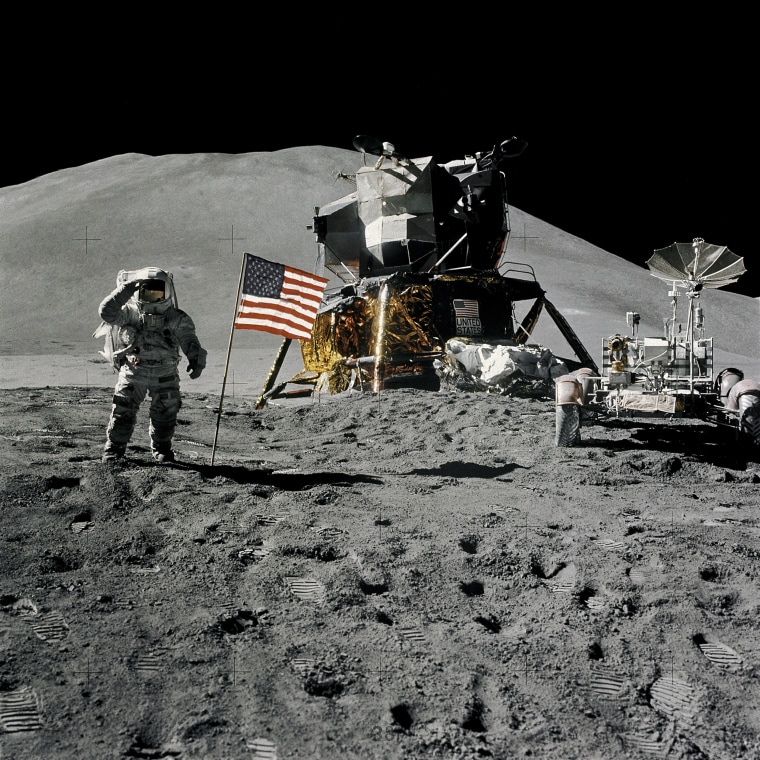
James Irwin and David Scott
James Irwin, lunar module pilot, gives a military salute to David Scott, taking the picture, while standing beside the U.S. flag during the Apollo 15 mission on Aug. 1, 1971.
The lunar module Falcon stands at center. Hadley Delta in the background rises approximately some 13,000 feet above the plain.

James Irwin, left, and David Scott sample rocks in the Mojave Desert during a field trip where they used a lunar rover simulator to explore a lava flow at the base of the Sierra Nevadas in California on April 29, 1971.
Irwin resigned from NASA and the Air Force in July 1972 to form a religious organization, High Flight Foundation, in Colorado Springs. He died in 1991.
A personal watch that Scott wore while walking on the moon sold for a whopping $1.625 million at auction in 2015. He is only one of three astronauts who have flown both earth orbital and lunar Apollo missions. He was born in 1932.

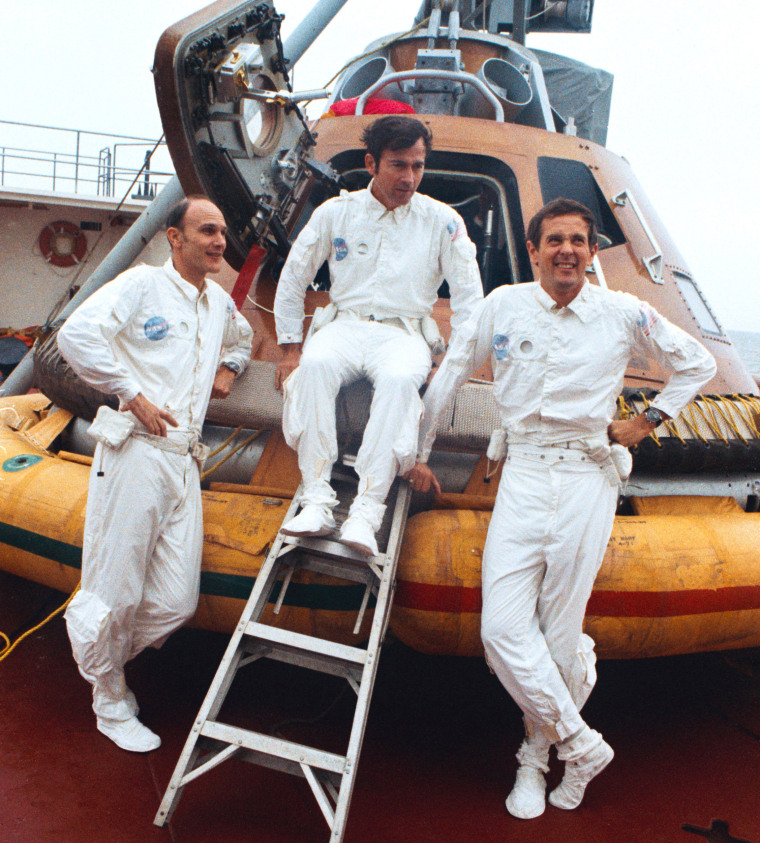
The Apollo 16 crew relaxes during water egress training in the Gulf of Mexico on Feb. 5, 1972.
From left, Thomas Mattingly II, John Young, and Charles Duke. Mattingly remained in orbit while Young and Duke landed on the moon.
At 36, Duke was the youngest man to walk on the moon. He retired from NASA in 1975 to enter private business. He was born in 1935.
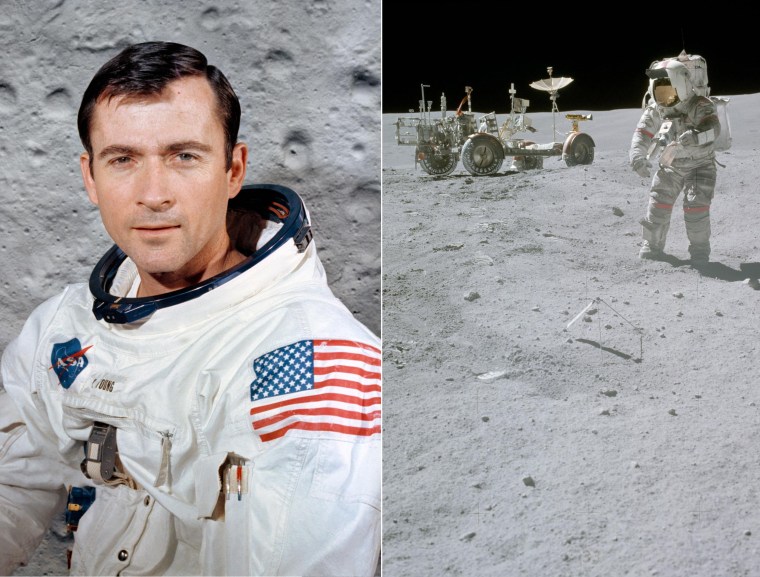
John Young was the only agency astronaut to go into space as part of the Gemini, Apollo and space shuttle programs, and the first to fly into space six times. He was the ninth man to walk on the moon.
Young was the commander for the space shuttle fleet's inaugural flight in 1981. He died Jan. 5, 2018, at his home in Houston following complications from pneumonia. He was 87.
Left: Young poses in a portrait for the Apollo 10 mission, where he was the command module pilot.
Right: Young, Apollo 16 commander, collects samples at the North Ray Crater geological site on April 23, 1972.
Related: John Young, legendary NASA astronaut who twice walked on moon, dies at 87
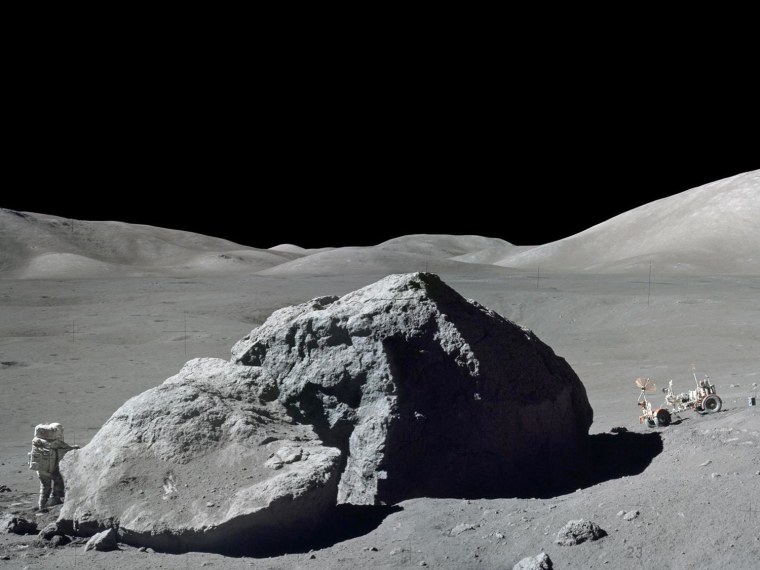
Harrison Schmitt and Eugene Cernan
Harrison Schmitt stands next to a huge, split lunar boulder during the third Apollo 17 moonwalk with Eugene Cernan in December 1972.
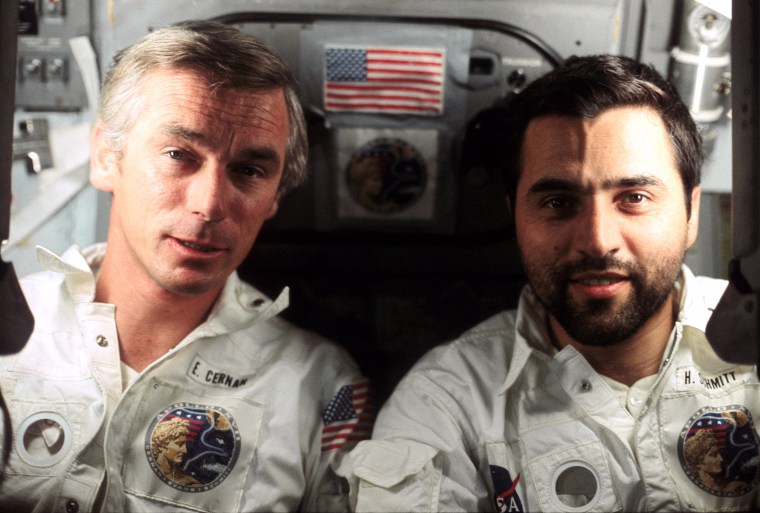
Eugene Cernan, left, and Harrison "Jack" Schmitt pose aboard the Apollo 17 spacecraft during the final lunar landing mission in December 1972.
Schmitt, born in 1935, was the first person initially trained as a scientist to walk on the moon. Originally a geologist, he was selected by NASA in June 1965 along with a group of other scientist-astronauts – the first group not to be test pilots.
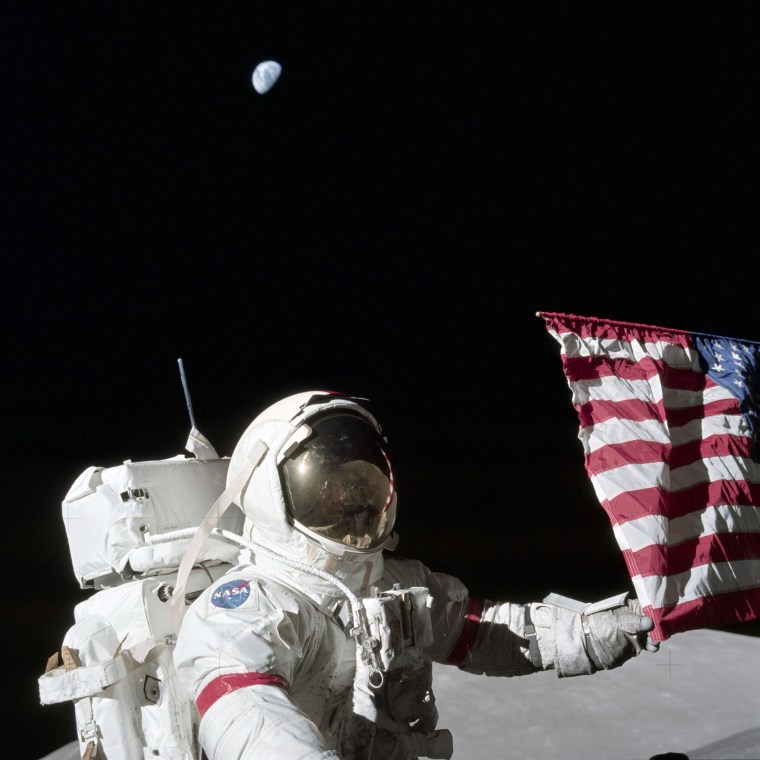
Apollo 17 mission commander Eugene Cernan holds the lower corner of the U.S. flag during the mission's first moonwalk on Dec. 12, 1972.
Cernan, the last man on the moon, traced his only child's initials in the dust before climbing the ladder of the lunar module the last time. He died on Jan. 16, 2017, in Texas.
Related: Gene Cernan, Last Astronaut on the Moon, Dies at 82